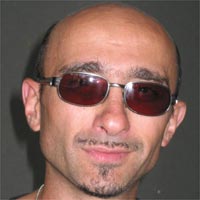Workshop on QUANTUM MEASUREMENTS AND OPERATIONS FOR CRIPTOGRAPHY AND INFORMATION PROCESSING
Quantum Measurements and Operations for Criptography and Information Processing
Quantum entanglement relativity and virtual quantum subsytems
>VITAE:
Paolo Zanardi got his PhD in 1995 in the II University of Rome working
on strongly correlated fermion systems. Since 1996 he got interested in
Quantum Information and computation and joined the newly born QIP research
Group at the ISI Foundation in Torino. Ever since then he has been active
in the field working on a diverse bunch topics e.g., decoherence control/avoidance,
geometrical quantum computing, QIP implementation with solid state systems,
entanglement in interacting systems of spins and indistinguishable particles.
Paolo Zanardi is currently coordinating the EU IST project TOPQIP on topological
quantum information processing.

Quantum entaglement is widely believed to be the unique
quantum resource at the basis of the speeups achievable by processing
information in a quantum fashion. The very definition of this resource
assumes the partition of a system into subsystems i.e., a tensor product
structure at the Hilbert state-space level. Operationally, this partition
is dictated by the set interactions and measurements physically accessible
by an observer. The emergence of a multi-partite tensor product structure
of the state-space, and so the notion of quantum entanglement, are then
relative and observer-induced.
I will introduce a general, operationally motivated, framework, based
on operator-algebras, aimed to formalize this ideas.
I will introduce the notion of virtual quantum subystem and discuss several
cases relevant to quantum information processing as well as to decoherence
avoidance.